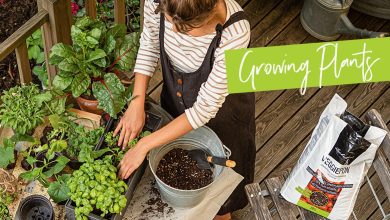Sansevieria: [Planting, Irrigation, Care, Transplantation and More]
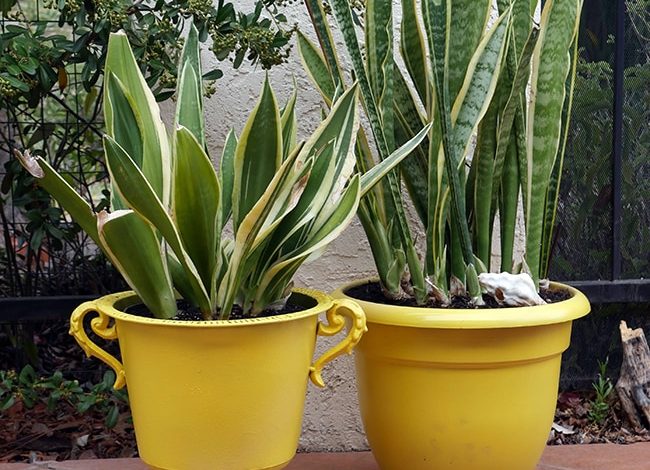
The Sansevieria is a perennial and herbaceous type plant. It belongs to the Ruscaceae family.
It is also known as «lizard tail», «mother-in-law’s tongue» or «Saint George’s sword».
Important points when planting Sansevieria
- When? In spring or summer.
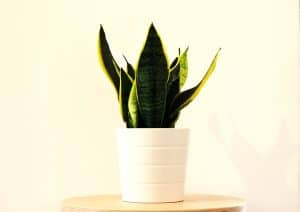
- Where? In small pots.
- Temperature? Resists high temperatures (up to 30ºC). He doesn’t like frost at all.
- How do we prepare the soil? It requires fertile soils. It is important to add compost or earthworm humus.
- Reproduction? It can be done by cuttings or by division of the plant.
- Demanding care? Lots of natural light and protect it from drafts.
- How to prepare the land? Use indoor soil and not garden soil.
- How do we water? Every two weeks in spring and summer, every three in autumn and every month in winter.
- There are about 50 species of Sansevieria.
When to sow Sansevieria ?
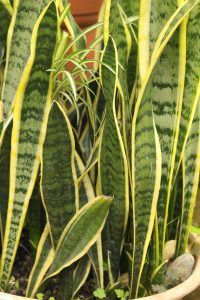 The sansevieria is an ornamental plant native to Africa; It has fleshy, concave or flat leaves in the form of rosettes, and its flowers are white.
The sansevieria is an ornamental plant native to Africa; It has fleshy, concave or flat leaves in the form of rosettes, and its flowers are white.
The fruit is a berry that contains the seeds.
The most popular types of this plant are Sansevieria cylindrica, which has cylindrical tube-shaped leaves, Trifasciata with flat leaves, and the most common variety, Laurentii, with green leaves edged with yellow.
The trifasciata was classified by NASA as an air purifying plant, since it eliminates toxic substances such as benzene and formaldehyde.
The time for planting is spring or summer, it must be at average room temperature and must be protected from cold temperatures since a temperature below 10 degrees Celsius irreversibly damages it.
Where do we plant the Sansevieria ?
Sansevieria is a potted plant, so it can stay in pots for years.
As it is ornamental, it can be placed in any part of the house or garden.
It is a dry soil plant, with high humidity it can die; in the garden it should be placed in semi-shade.
How to prepare the land for the cultivation of Sansevieria ?
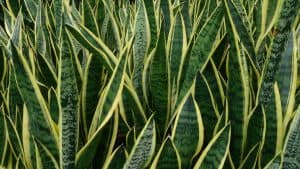 To prepare the soil, it is necessary to use not very large pots, because the sansevieria does not adapt well to large pots.
To prepare the soil, it is necessary to use not very large pots, because the sansevieria does not adapt well to large pots.
You must guarantee that there is good drainage, so it is advisable to mix mulch with perlite or with sand in equal parts, and put a first layer of volcanic clay inside the pot to ensure that the water drains quickly.
Planting the sansevieria correctly in the pot is essential for it to be healthy and last a long time.
It is better to use a good soil for indoor plants and not the one from the garden.
Why? Because the plant needs the consistent drainage qualities and added fertilizers of potted soil to ensure its development.
Garden soil, on the other hand, varies considerably and therefore may not have the right qualities for the plant.
How do we water the Sansevieria ?
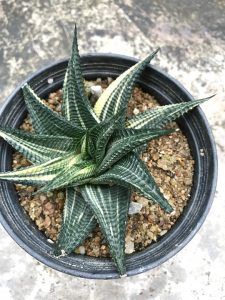 Watering should be every two weeks in spring and summer, every three weeks in fall, and every month in winter.
Watering should be every two weeks in spring and summer, every three weeks in fall, and every month in winter.
It is important that you allow the soil to dry completely before watering.
Afterwards, water a lot until the water comes out through the drainage hole.
Let the pot drain and finally discard the water that remains in the saucer, this way you will avoid excessive watering, since this plant withstands prolonged drought conditions.
With excessively wet soil, sansevieria tends to rot, as happens with plants that store water in their leaves.
How do we plant Sansevieria step by step?
What we need
To sow you need the following tools:
- A pot and saucer suitable for the size of the clean leaves.
- Sharp knives.
- Common scissors or garden shears Peat or vermiculite.
- Container to mix the ingredients of the earth.
- Large wooden spoon.
plant division
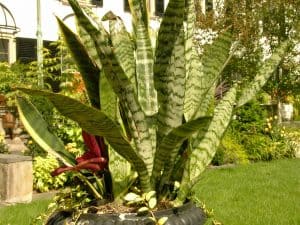 To propagate sansevieria the plant should be divided, the fleshy rhizomes can be separated with a clean, sharp knife, and allowed to dry for a few days, after which a sandy, easily draining mix should be placed.
To propagate sansevieria the plant should be divided, the fleshy rhizomes can be separated with a clean, sharp knife, and allowed to dry for a few days, after which a sandy, easily draining mix should be placed.
You must not plant the cutting deeper than its original position or you risk the base rotting.
Use of stones or stakes
Use small stones or stakes to keep the cutting vertical until it has properly rooted.
Water moderately until you see some growth.
The plant can be propagated by clipping the leaves, but this is a very slow method and, in addition, the species may lose their shades.
How to Propagate Sansevieria Correctly
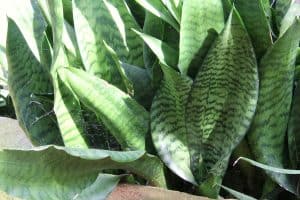 To propagate, after choosing a healthy green leaf from the plant, cut the leaf into four to six inch segments, but make sure which side was the top and which side the bottom of the cut.
To propagate, after choosing a healthy green leaf from the plant, cut the leaf into four to six inch segments, but make sure which side was the top and which side the bottom of the cut.
Because it is important?
Because you must plant that cut leaf in the direction that the leaf has been growing; otherwise it will not grow.
You should also be careful to let the leaves cure for a couple of days before planting.
the transplant
Sansevieria can stay in the same pot for years because it has small roots; that is why they should only be transplanted when the roots begin to grow out of the pot.
To carry out the transplant, move it to another pot one size larger, because, as has been said, this plant does not support large pots because its roots rot.
What care does the Sansevieria have?
Lack of water
 You must be very careful with withered or dry leaves because it is the sign that it lacks water.
You must be very careful with withered or dry leaves because it is the sign that it lacks water.
Lack of light
The same happens with the lack of lighting that produces a deterioration of the color in the leaves that are coming out.
excessive ventilation
But excessive ventilation can result in the tips of the leaves drying out, in which case you should make sure there is no excessive draft.
excessive watering
Overwatering rots the leaves. Careful with this!
Place in a room where there is plenty of natural light and where it is protected from drafts, both cold and warm.
prune often
Prune it to remove wilted leaves and flowers. The light should be moderately bright or filtered.
Although they tolerate low light, bright light brings out the colors in the leaves, but intense light can cause the edges of the leaves to turn yellow.
What pests and diseases does Sansevieria have?
Sansevieria is affected by different pests, especially cottony scales, which are insects that feed on the sap and weaken the plant.
These mealybugs, however, can be removed without problems, but they must be detected in time.
As for diseases, sansevieria is attacked by fungi that cause the following diseases:
- Botrytis: a kind of gray mold appears at the base of the leaves that ends up rotting them. Affected parts have to be cutand treated with systemic fungicide.
- Mildiu: is a fungus that causes the appearance of brown spots on the upper part of the leaves and a gray powder on the underside. The affected parts must also be cut, and it must be treated witha fungicide.
- Fusarium: causes the appearance of dry, reddish-brown spots with a yellow border. It must be treated with fungicides containing Chlorthalonil.




